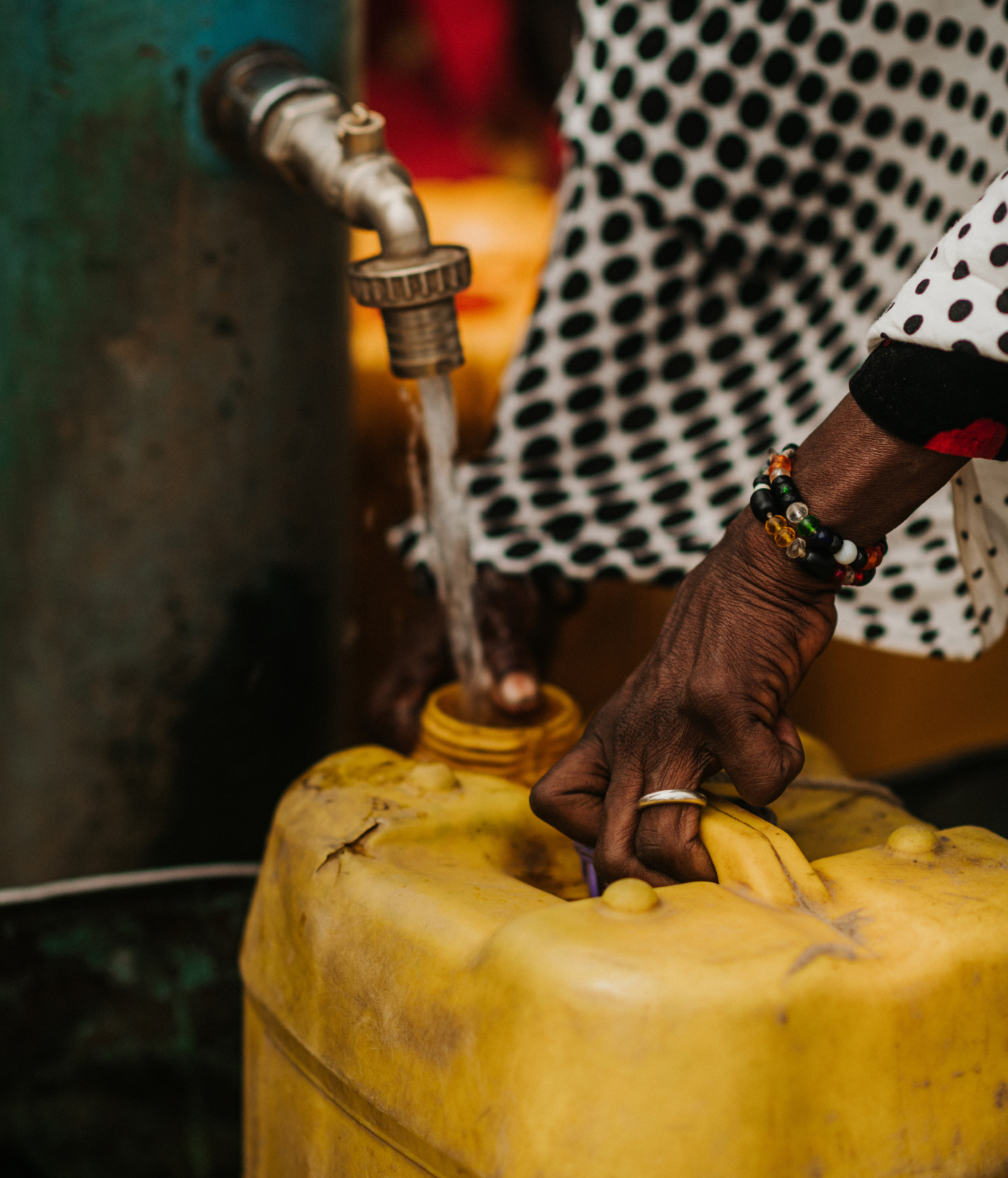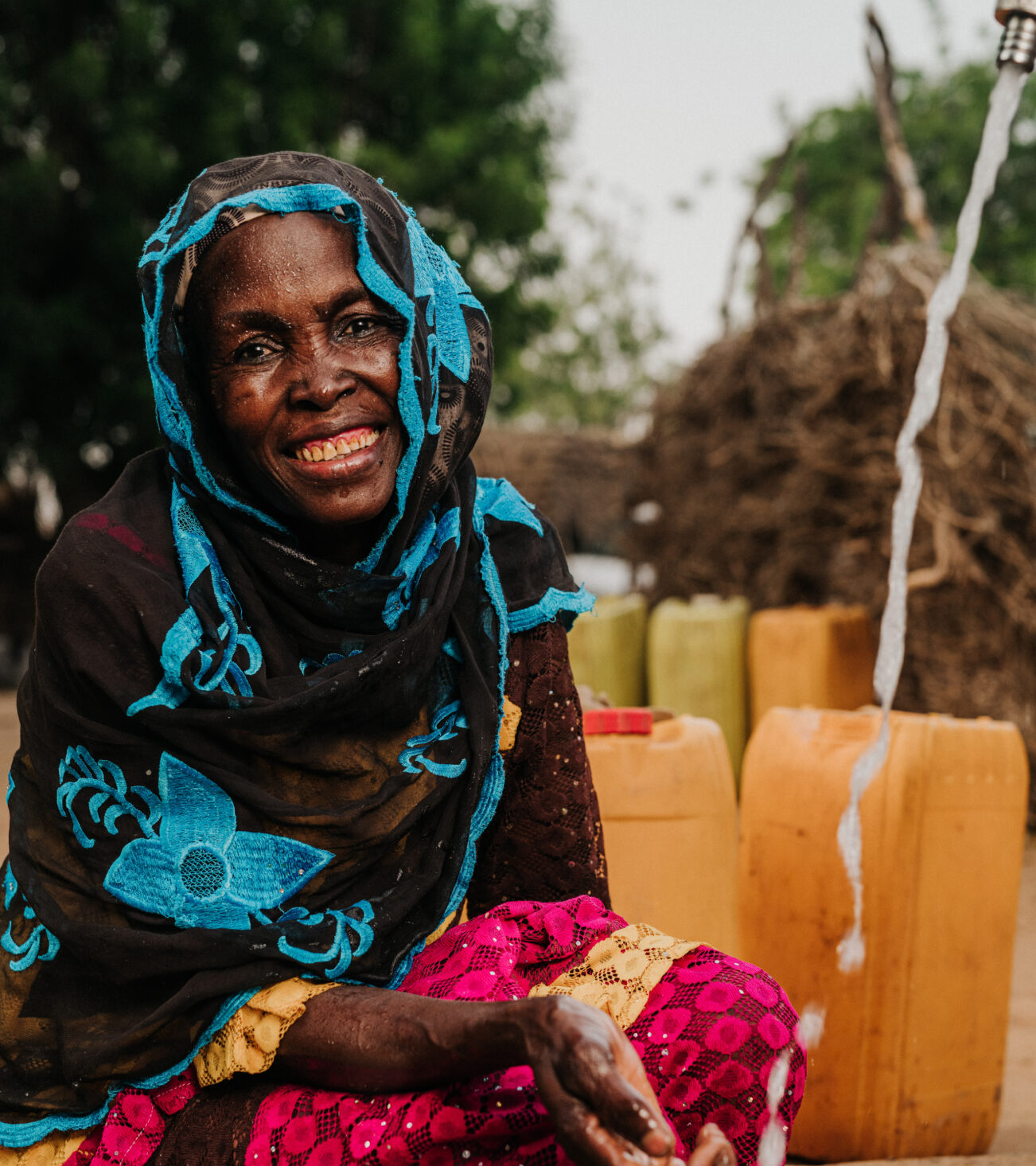Chad ranks 190 out of 193 countries in the UN’s Human Development Index.1 It is located in Africa’s Sahel region and stands today as one of the most spiritually needy areas of the world. Within the Sahel, our strategic focus countries include Chad and Niger, home to 107 unreached people groups representing more than 33 million people.2 More than 20 million people in rural Chad and Niger lack access to clean water.
CHAD BY THE NUMBERS
Chad Water Crisis
The Water Crisis in Chad
DO SOMETHING
Fund a Project in Chad
Serve an entire community or school with clean and living water. Projects range in cost depending on the region, project type, and amount of people served.
Serving the Unreached
The Sahel region represents a large component of the western third of the 10/40 Window — one of the most spiritually needy areas of the world5. In both Chad and Niger the Christian Church is in the extreme minority. Christians are often persecuted for their faith. Local churches are marginalized and neglected by the wider community.
Our local partners invite pastors and churches to participate in providing clean water—one of the most tangible ways to respond to the Chad water crisis. This not only helps them build credibility, trust, and meaningful relationships, but also opens the door for faith conversations and long-term transformation.
Our programs in Chad and Niger provide evangelism training and support local pastors with evangelistic resources. Local believers are also empowered to lead evangelistic activities in their own communities.

Our Plan for the Water Crisis in Chad
With your help, more than 210,000 people affected by the Chad water crisis will gain access to clean and living water across two target regions in Chad and Niger by the end of 2028. You can make it possible to see:
communities gain access to clean drinking water through mechanized boreholes and piped water systems connected to community tap stands
tap stands constructed in schools and connected to completed systems
communities trained to operate and maintain water points
pastors, evangelists, and local believers mobilized to participate in WASH programs as an access point to share the gospel with unreached communities
Health Risks from the Chad Water Crisis
It’s a shocking truth—yet every day in Chad, families are forced to drink from contaminated sources, because there is simply no alternative. This is the reality of the Chad water crisis. It’s not just about water access—it’s about survival.
Unsafe water leads to diseases like cholera, dysentery, and typhoid. These are illnesses that are easily preventable and rarely fatal in developed countries. But in rural Chad, they can be deadly—especially for young children.
Health impacts of the Chad water crisis include:
- Diarrheal diseases are a leading cause of death in children under five
- Lack of sanitation and clean water fuels repeated outbreaks of cholera
- Limited healthcare access makes recovery from waterborne illness difficult
- Malnutrition worsens when children are too sick to eat or absorb nutrients
The health crisis in Chad won’t end until every community has access to safe, clean water. Your support can be the difference between illness and life.
How the Water Crisis Affects Girls and Women
For millions of girls in Chad, this is not a “what if”—it’s daily life. The Chad water crisis forces women and girls to walk hours each day to collect water, often from unsafe and faraway sources. This time-consuming burden robs them of education, safety, and opportunity.
Here’s how the Chad water crisis uniquely harms girls and women:
- Girls miss school to help their families collect water
- Long treks to water sources put them at risk of harassment and violence
- Carrying heavy water containers causes chronic pain and fatigue
- The cycle repeats daily, leaving little time for rest or growth
When a well is built in a community, girls return to school. Mothers can work or rest. Families thrive. Ending the water crisis is one of the most powerful ways to promote gender equity and long-term change in Chad.
Stories from Chad
Frequently Asked Questions
1. What does your water charity do to address the Chad water crisis?
In Chad, we focus on providing sustainable clean water solutions to rural communities. Our initiatives include drilling deep boreholes equipped with solar-powered pumps and establishing piped water systems connected to community tap stands. These efforts aim to alleviate the burden of water collection and reduce waterborne diseases.
2. Where does your water charity operate?
3. How does my donation help?
Your donation directly supports the implementation of clean water projects in Chad. These projects not only provide access to clean water but also foster community development and health improvements.
4. Why is Chad facing such a severe water crisis?
Chad’s water crisis is primarily due to its arid climate, especially in the Sahel region, leading to scarce water resources. Additionally, deep groundwater tables make traditional hand pumps ineffective, and existing water sources are often distant from communities.
5. How does the Chad water crisis affect health?
Limited access to clean water in Chad results in increased prevalence of preventable diseases such as diarrhea and skin infections. The absence of nearby health centers exacerbates these health challenges, particularly affecting children who are more vulnerable to waterborne illnesses.
6. Who is most impacted by the water crisis in Chad?
Women and children are disproportionately affected, often spending 4-6 hours daily traveling long distances to collect water. This time-consuming task hinders educational and economic opportunities and exposes them to potential dangers during these journeys.
7. How long does it take to complete a water project?
The completion time for water projects varies. Funding urgent needs typically takes up to 12 months, while selecting a specific project and country can take 18 months or more, depending on project availability and complexity.
8. Can I see the impact of my support to Chad’s water crisis?
Yes, we provide donors with personalized reports detailing the progress and impact of the projects they support. This includes stories from beneficiaries and updates on how the community is benefiting from the clean water access.
Get Our Emails
Get our monthly newsletter with stories of impact, ways to pray for the unreached, tips for giving, and more ways to impact the world around you.

